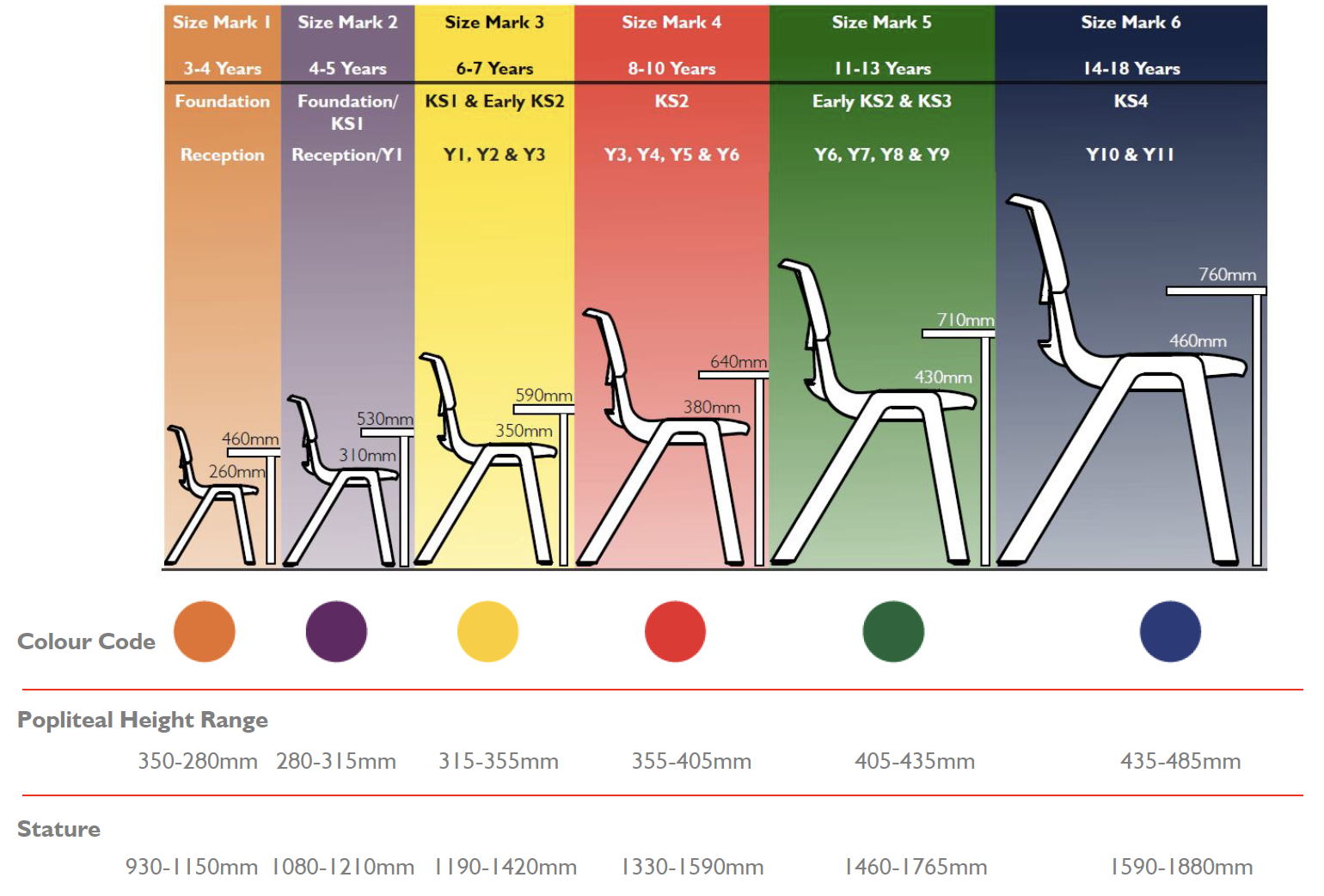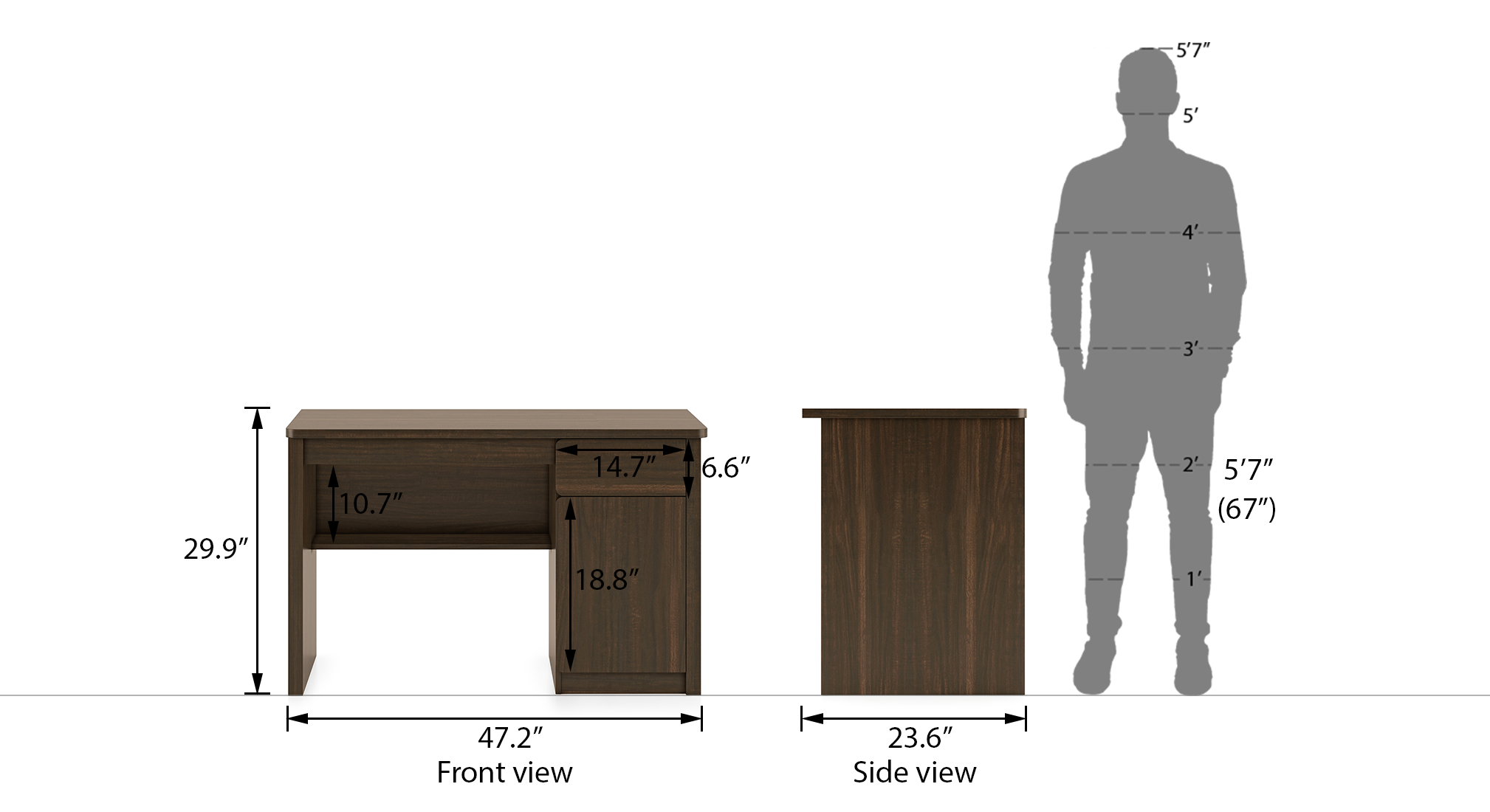Standard Dimensions for Study Tables

A study table is an essential piece of furniture for anyone who needs a dedicated workspace for studying, working, or pursuing hobbies. The right dimensions for a study table can significantly impact comfort, productivity, and overall well-being. Choosing the appropriate dimensions involves considering factors like personal preferences, intended usage, and available space.
Standard Dimensions for Study Tables
The table below summarizes common standard dimensions for study tables, categorized by type:
| Type | Length (in) | Width (in) | Height (in) |
|---|---|---|---|
| Single-person | 48-60 | 24-30 | 29-30 |
| Double-person | 60-72 | 36-48 | 29-30 |
| Corner | 48-60 | 48-60 | 29-30 |
Rationale Behind Different Dimensions, Standard dimensions of study table and chair
The dimensions of a study table are influenced by several factors, including:
- Ergonomics: The height of the table should be adjusted to ensure proper posture and minimize strain on the neck, back, and wrists. A standard height of 29-30 inches allows for a comfortable arm and elbow position while working.
- Space Constraints: The size of the table should be appropriate for the available space. A smaller table may be suitable for a compact room, while a larger table might be necessary for a spacious room or if multiple people will be using it.
- Intended Usage: The intended usage of the table will influence its dimensions. For example, a table used for writing and reading might require a larger surface area than a table used primarily for a laptop.
Comparison of Standard and Recommended Dimensions
The following table compares standard dimensions with recommended dimensions for different body types and study habits:
| Body Type/Study Habits | Standard Length (in) | Recommended Length (in) | Standard Width (in) | Recommended Width (in) |
|---|---|---|---|---|
| Average height, single user | 48-60 | 54-66 | 24-30 | 28-34 |
| Tall, single user | 48-60 | 58-70 | 24-30 | 30-36 |
| Multiple users, shared space | 60-72 | 72-84 | 36-48 | 42-54 |
| Extensive writing, drawing | 48-60 | 54-66 | 24-30 | 30-36 |
Note: Recommended dimensions may vary based on individual preferences and specific needs.
Factors Influencing Study Table and Chair Dimensions: Standard Dimensions Of Study Table And Chair

The selection of study table and chair dimensions is a crucial aspect of creating a conducive and comfortable learning environment. Several factors play a significant role in determining the ideal dimensions for a study table and chair, ensuring optimal comfort, functionality, and ergonomics.
Room Size
The available space in a room is a primary factor influencing the dimensions of a study table and chair. A larger room provides more flexibility in choosing larger furniture, while smaller rooms necessitate compact and space-saving options.
- For instance, in a small bedroom, a smaller study table with dimensions of 48 inches wide and 24 inches deep would be a suitable choice. This size provides ample desk space while minimizing footprint.
- Conversely, a larger room can accommodate a larger study table with dimensions of 60 inches wide and 30 inches deep, offering more workspace and storage options.
Personal Preferences
Individual preferences significantly impact the choice of study table and chair dimensions. Height, posture, and preferred working style are essential considerations.
- Individuals with a taller stature might prefer a study table with a higher desk height, while shorter individuals might opt for a lower desk height.
- Those who prefer to sit upright might prefer a chair with a higher backrest, while those who prefer to recline might opt for a chair with a lower backrest.
Intended Usage
The intended usage of the study table and chair also influences the choice of dimensions. A study table used for reading might require a smaller desk space than a table used for writing or drawing.
- For example, a study table intended for reading might have dimensions of 36 inches wide and 20 inches deep, while a table for writing or drawing might require a larger desk space, such as 48 inches wide and 24 inches deep.
- A study table intended for computer use might require a wider desk space to accommodate a laptop, monitor, and peripherals.
Design Elements
Several design elements impact the overall comfort and functionality of study tables and chairs. These include desk space, storage options, and adjustable features.
- Desk Space: The amount of desk space available is crucial for comfortable and efficient work. A larger desk space allows for better organization and prevents clutter.
- Storage Options: Study tables with built-in storage options, such as drawers, shelves, or cabinets, help to keep study materials organized and easily accessible.
- Adjustable Features: Adjustable features, such as adjustable desk height or chair height, can enhance comfort and ergonomics, especially for individuals with varying heights or posture preferences.
Accessibility Needs
When selecting study table and chair dimensions, it is essential to consider accessibility needs.
- Individuals with mobility limitations might require a study table with a lower desk height and a chair with adjustable height and armrests.
- Individuals with visual impairments might benefit from a study table with a clear and well-lit work surface.
Standard dimensions of study table and chair – Finding the right study table and chair dimensions is crucial for creating a comfortable and productive workspace. While traditional desk setups are popular, consider adding a touch of casual comfort with a big grey bean bag chair for those moments of creative brainstorming or relaxed reading.
This unique addition can offer a different perspective while still maintaining the functionality of a standard study table and chair setup.
Finding the right study table and chair dimensions is crucial for comfort and productivity, just like finding the right comedic angle for a satirical show. South Park, with its bold humor, has tackled post-covid anxieties in episodes like victor chaos south park post covid , showcasing the absurdity of our new reality.
Much like a well-designed study space, a good satirical piece needs the right balance of elements to hit the mark and leave a lasting impression.
